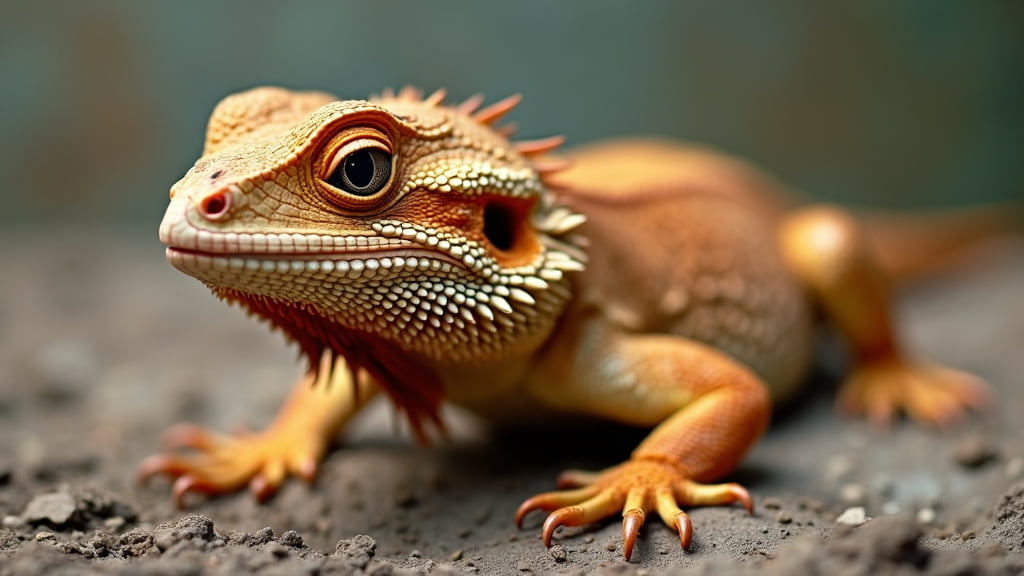Common Shedding Problems in Bearded Dragons
Shedding is a natural and crucial part of a bearded dragon’s life cycle. However, it can sometimes lead to various problems that concern many pet owners. Understanding and addressing these issues can make a significant difference in your dragon’s well-being. As someone who’s had the pleasure of raising several bearded dragons over the years, I’ve encountered my fair share of shedding complications. Here’s an engaging and informative guide to help you navigate the shedding process with ease.
Introduction
When my first bearded dragon, Spike, began shedding, I was both fascinated and worried. Shedding, or ecdysis, is a normal process, but it can cause stress and discomfort for your scaly friend. If you own a bearded dragon, it’s essential to recognise the signs of healthy shedding and be aware of common problems that can arise.
Shedding Issues: Identifying the Common Problems
Retained Shed
What is Retained Shed?
Retained shed occurs when old skin doesn’t come off entirely during the shedding process. This issue can affect various parts of a bearded dragon’s body, such as toes, tail tips, or around the eyes.
Causes and Symptoms
This problem often stems from inadequate humidity levels, improper nutrition, or lack of shedding aids like rough surfaces. You’ll notice tight bands of old skin clinging to your dragon, which can constrict circulation and lead to serious complications.
Solutions and Prevention
To prevent and address retained shed:
- Hydrate: Ensure your dragon gets regular baths or misting to increase humidity.
- Nutrition: Provide a diet rich in vitamins and minerals.
- Shedding aids: Incorporate objects like rocks and branches in the enclosure for natural shedding assistance.
If the issue persists, it’s best to consult a veterinarian. A vet might recommend specific treatments or additional changes to your care routine.
Dysecdysis (Incomplete Shedding)
Dysecdysis is a more severe condition where the bearded dragon struggles to shed entirely. This can be due to a variety of factors, including improper habitat conditions or underlying health issues.
Identifying Dysecdysis
- Patchy Skin: Noticeable patches of old skin clinging on.
- Behavioural Changes: Increased irritability or lethargy.
- Physical Discomfort: Scratching against surfaces continually.
Addressing Dysecdysis
- Correct the Environment: Make sure your enclosure has the right temperature gradient, humidity levels, and UVB lighting.
- Soaks and Baths: Regular warm water soaks can help. A weekly soak of 15-20 minutes is often beneficial.
- Veterinary Advice: Persistent dysecdysis should be looked at by a vet. Underlying health issues could be at play, such as an infection or nutritional deficiencies.
Stuck Eyecaps
Stuck eyecaps are another common shedding issue where the skin around the bearded dragon’s eye doesn’t shed properly.
Detecting Stuck Eyecaps
- Excessive Blinking: Indicating irritation.
- Cloudy Eyes: Reduced visibility due to retained skin.
Treatment and Care
- Moisture: Increase ambient humidity and provide gentle misting.
- Gentle Assistance: Use a moist cotton swab to lightly dab the area, never forcing the skin off.
- Vet Visit: If not resolved within a few days, your vet must check for potential eye infections or deeper issues.
Conclusion
Shedding is a vital process for bearded dragons, and as caregivers, it’s our responsibility to ensure they navigate this phase smoothly. From retained shed to more serious conditions like dysecdysis and stuck eyecaps, understanding and mitigating these issues can significantly enhance your dragon’s quality of life.
By maintaining the correct enclosure conditions, providing a balanced diet, and regularly monitoring your pet, you can prevent most common shedding problems. Always remember to consult a vet if you encounter persistent issues.
For more in-depth care guides and support, feel free to explore our Bearded Dragon Care section. And if you’re dealing with a stubborn health issue, this veterinary resource comes highly recommended.
Stay informed, stay observant, and always keep your bearded dragon’s habitat optimised for their health and happiness!

